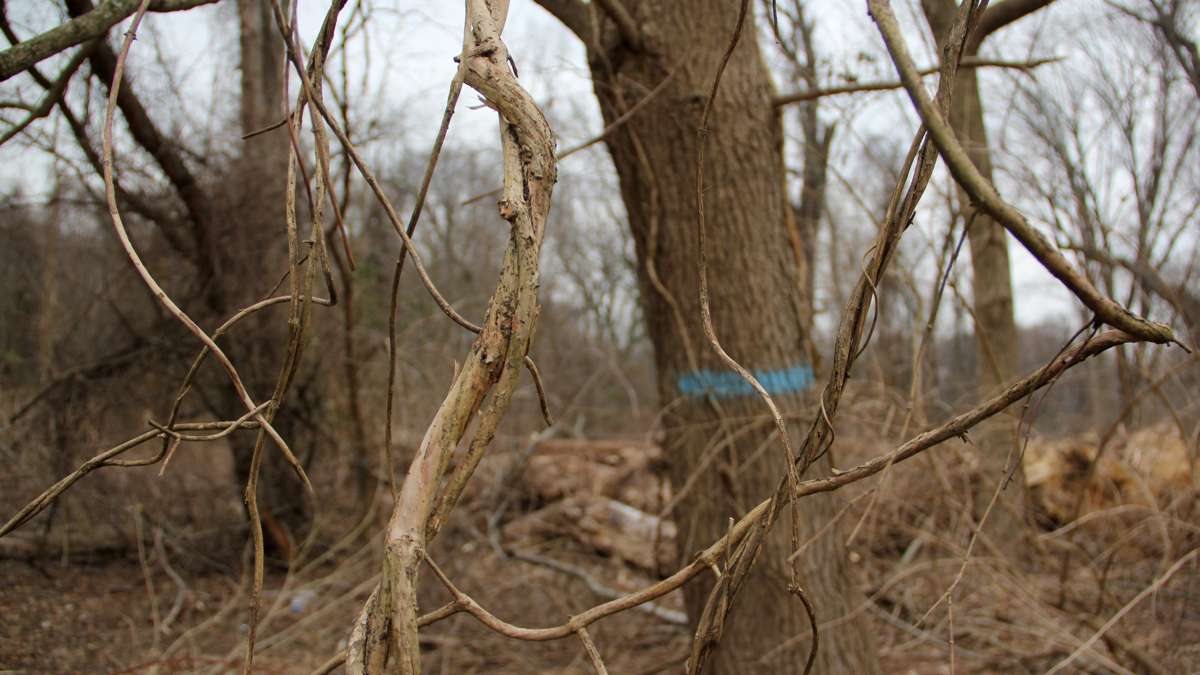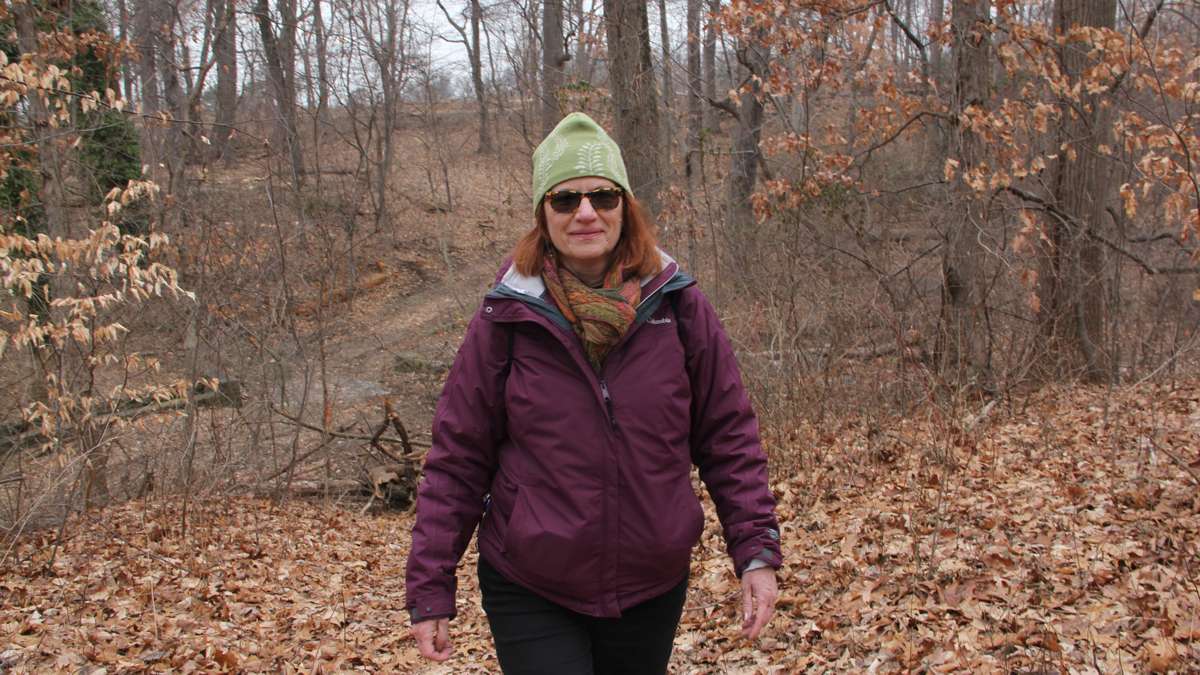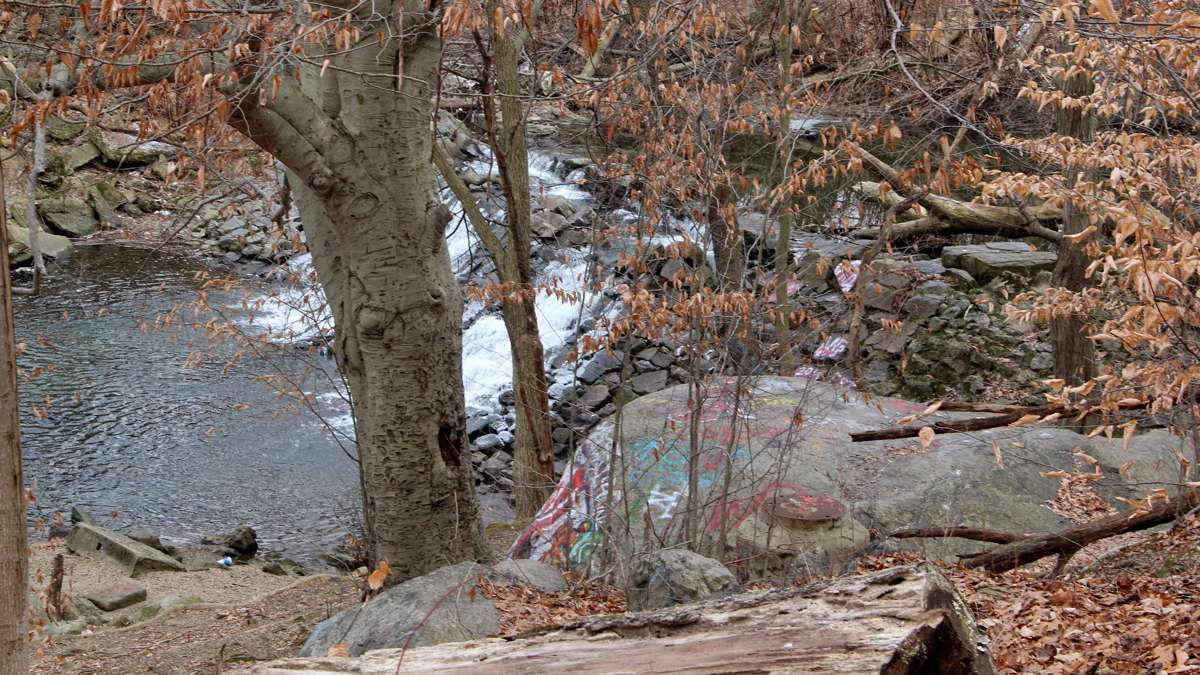Climate change to Philly trees: it’s not 1910 anymore
ListenThe Philadelphia Parks Department is launching experiments at three different test sites in city parks in the hopes of designing a forest for the warming world.
Philadelphia has 5,600 acres of forests—enough to fill Center City four times.
For years, forest managers have tried to make those forests—from Fairmount to Pennypack—look more like they did before industrialization.
“We have always tried to recreate the forests of the past,” said Joan Blaustein head of urban forestry and ecosystem management at the Philadelphia Parks Department.
“Bring back the species and the density of early 20th century forests, which meant planting certain species and removing certain species that weren’t native or didn’t belong here at that particular time.”
This restoration paradigm has long governed the field of conservation biology. But today, spurred by a warming world, a faction of ecologists, Blaustein included, are taking a different tact.
“We need to anticipate what the conditions are going to be 100 years from now, rather than trying to restore to 100 years ago,” Blaustein said. “We know that things are going to get warmer and wetter and much more quickly than ecosystems have been able to adapt to those changes ever before.”
Experiments for a warming world
This winter, Blaustein’s team is launching experiments at three different test sites in city parks in the hopes of designing a forest for the warming world.
At roughly 30-acre sites in Cobbs Creek and Wissahickon Valley parks, Blaustein will change the mix of species crews clear and plant to find find species that will thrive in the future. And in Pennypack Park, she will test how effective simply erecting a deer fence is in promoting forest health.
On a recent visit to the Cobbs Creek site, a path into the park was rutted by heavy machinery and flanked by downed trees.
“We’re in the clearing phase,” Blaustein said. “We’re going to take down trees that are either dead or hazardous and remove all the…invasive vines and other growth so that we can then replant with things that we want to encourage.”
In the fall, the city will plant non-native trees suited to warmer climates, including the Southern chestnut oak and bald cypress, and plant some species native to Pennsylvania that are currently at the northern end of their range, such as the Southern red oak and red mulberry.
The city is also experimenting with letting some species live that they would normally remove, like the Northern catalpa, yellow buckeye and European alder.
“We decided for this site to actually protect pockets of (buckeyes) to see, ok, how does this behave, how does it survive, does it reproduce, does it become problematic. It gives us a chance to really look at it in a more controlled way,” said Tom Whitmer, natural lands restoration manager for the urban forestry program.
The idea is that the buckeye, catalpa, European alder or newly planted southern species might survive and take the place of native trees that may wither in a changing climate. In Philadelphia, sugar maple, hemlock and basswood are some trees that are potentially at risk, the parks department said.
City taking a controversial approach
“There’s a huge divide among conservation biologists,” said Daniel Simberloff, an ecologist at the University of Tennessee Knoxville and outspoken critic of the kinds of management strategies Philadelphia is testing.
Non-native species could die quickly, Simberloff said, or the opposite: spread like wildfire and choke out other species. If the tests in so-called ‘assisted migration’ aren’t harmful, they may be useless.
“I’m far from convinced that species won’t get there on their own as climate changes, through normal seed dispersal routes, so it’s not clear to me that assisted migration is really needed,” Simberloff said.
In the country’s national parks, forest managers are also planning for climate change, but with a lighter touch.
“Some intensive management interventions that are appropriate on some lands may not be appropriate on parklands, where protection and conservation are the primary goals,” said Nicholas Fisichelli, an ecologist with the National Park Service’s Climate Change Response Program.
Fisichelli is talking about assisted migration, or planting southern species farther north.
The park service is focusing on making forests healthier overall by reducing ‘non-climate stressors,’ including non-native tree pests and plants.
“The idea here is that you reduce these non-climate stressors so that native species are better able to adapt to shifting conditions,” Fisichelli said.
Somewhere between Philadelphia’s tree experiments and the more hands-off National Park approach sit Chicago’s management practices.
The Chicago Park District is planting a broad variety of trees so most will survive, no matter what effects ‘global weirding’ has on the city, said Cathy Breitenbach, the park district’s director of natural resources.
“We don’t really know what may happen, we’re expecting extremes, more extreme precipitation, more extreme storms, more extreme heat in the summer but also perhaps cold in the winter, and by diversifying we have a better chance that we won’t lose large numbers of trees whatever may happen,” Breitenbach said.
Natural lands, filled with prairie grasses in Chicago, are changing too.
“We will only accept seed from where were are or to the south, we will no longer accept any seed from areas north of us,” Breitenbach said. “It’s one way that we can hope to be able to adapt.”
A true experiment
Simberloff and other critics point out there is little to no on-the-ground evidence that the strategies Joan Blaustein is trying in Philadelphia will work.
That, she said, is exactly why she designed an experiment to test them out.
“We can’t have a pristine mix of only historical species because there are a lot of species that are going to do very well in the future, and we can’t just clear cut them away because they don’t belong here,” Blaustein said. “Our ability as a species to survive are going to depend on the work that these forest do.”
In five years, Blaustein hopes the early results of her experimental test plots will give her an idea of which new trees to plant city-wide.
WHYY is your source for fact-based, in-depth journalism and information. As a nonprofit organization, we rely on financial support from readers like you. Please give today.












